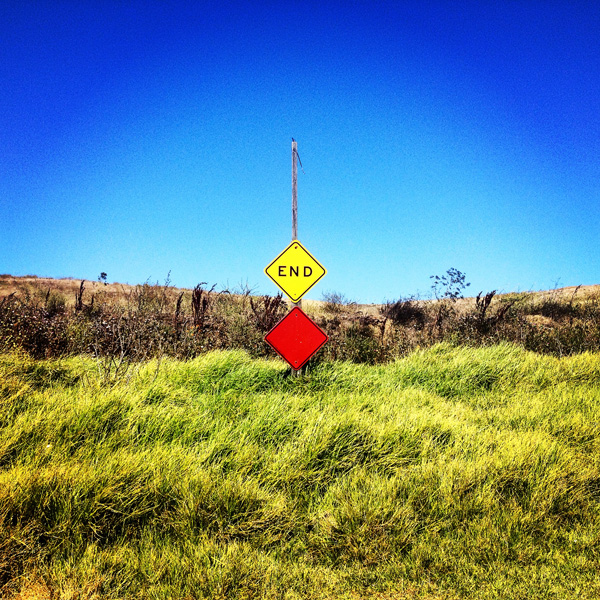Sherwin Nuland on the Art of Dying as a Lens on the Art of Living Meaningfully
“The greatest dignity to be found in death is the dignity of the life that preceded it.”
“To lament that we shall not be alive a hundred years hence, is the same folly as to be sorry we were not alive a hundred years ago,” Montaigne wrote in his timeless meditation on death and the art of living. And yet in the half millennium since his day, we’ve made paltry progress on coming to such nonchalant terms with the reality of death. We are stillprofoundly unprepared when it strikes our loved ones and paralyzed by the prospect of our own demise. Our discomfort with “the idea of a permanent unconsciousness in which there is neither void nor vacuum — in which there is simply nothing” is what surgeon, bioethicist, essayist, and Yale professorSherwin Nuland (1930–2014) explores with astonishing wisdom and sensitivity in his soul-stretching 1993 book How We Die: Reflections of Life’s Final Chapter (public library) — a dimensional treatise on death and an effort to “demythologize the process of dying,” fusing philosophical reflections on its most universal aspects with the specialized complexities occasioned by the six most common disease categories implicated in modern death.
But Nuland’s hard-earned professional expertise, his life’s work in medicine and understanding the human condition, is merely the byproduct of his unforgiving personal brush with death — Nuland lost his mother to colon cancer a week after his eleventh birthday, a tragedy that shaped his life. “All that I have become and much that I have not become, I trace directly or indirectly to her death,” he reflects. This book itself was written less than a year after Nuland lost his brother to the same disease that had claimed their mother’s life.

Nuland writes:
Everyone wants to know the details of dying, though few are willing to say so. Whether to anticipate the events of our own final illness or better to comprehend what is happening to a mortally stricken loved one… we are lured by thoughts of life’s ending… To most people, death remains a hidden secret, as eroticized at it is feared. We are irresistibly attracted by the very anxieties we find most terrifying; we are drawn to them by a primitive excitement that arises from flirtation with danger. Moths and flames, mankind and death — there is little difference.
[...]
As with every other looming terror and looming temptation, we seek ways to deny the power of death and the icy hold in which it grips human thought.
Throughout history, he observes, our strategies for ameliorating that icy hold have varied, from mythology to humor to religion, but the past few decades have given us a wholly new phenomenon, one he dubs “modern dying” — a sort of packaged experience that takes place at the hospital, where we try to artificially enact the ancient ideal of ars moriendi, or the art of dying. Reflecting on his extensive work with dying patients, Nuland considers the impossibility of that ideal in a modern context:
The good death has increasingly become a myth. Actually, it has always been for the most part a myth, but never nearly as much as today. The chief ingredient of the myth is the longed-for ideal of “death with dignity.”
[...]
The belief in the probability of death with dignity is our, and society’s, attempt to deal with the reality of what is all too frequently a series of destructive events that involve by their very nature the disintegration of the dying person’s humanity. I have not often seen much dignity in the process by which we die… Only by a frank discussion of the very details of dying can we best deal with those aspects that frighten us the most. It is by knowing the truth and being prepared for it that we rid ourselves of that fear of the terra incognita of death that leads to self-deception and disillusions.
And yet despite lamenting the illusory mythology of dying with dignity, Nuland’s perspective is ultimately an optimistic one, reframing the source of dignity in death rather than denying it altogether, and doing so in wonderfully poetic terms:
The greatest dignity to be found in death is the dignity of the life that preceded it. This is a form of hope that we can all achieve, and it is the most abiding of all. Hope resides in the meaning of what our lives have been.

But our greatest act of hope in dying, Nuland argues, is the dissolution of ourillusion of separateness. He writes:
The real event taking place at the end of our life is our death, not the attempts to prevent it. We have somehow been so taken up with the wonders of modern science that our society puts the emphasis in the wrong place. It is the dying that is the important thing — the central player in the drama is the dying man: the dashing leader of that bustling squad of his would-be rescuers is only a spectator, and a groundling at that.
Reflecting on the commonly documented medical fact that the dying can often survive for weeks beyond their prognosis, sustained merely by the hope to live until a specific moment of significance — a daughter’s wedding, a grandchild’s graduation — Nuland calls to mind Rilke’s famous lines of verse (“Oh Lord, give each of us his own death / The dying, that issues forth out of the life / In which he had love, meaning and despair”) and considers the true source of hope:
For dying patients, the hope of cure will always be shown to be ultimately false, and even the hope of relief too often turns to ashes. When my time comes, I will seek hope in the knowledge that insofar as possible I will not be allowed to suffer or be subjected to needless attempts to maintain life; I will seek it in the certainty that I will not be abandoned to die alone; I am seeking it now, in the way I try to live my life, so that those who value what I am will have profited by my time on earth and be left with comforting recollections of what we have meant to one another… Whatever form it may take, each of us must find hope in his or her own way.

Nuland turns to the heaviest burden in dying, the feeling of regret over “conflicts unresolved, breached relationships not healed, potential unfulfilled, promises not kept, and years that will never be lived.” But even in this despairing proposition, he finds an unlikely and rather beautiful source of hope. Subverting Viktor Frankl’s famous formulation of the oft-repeated idea that we should live each day as if it were our last — “Live as if you were living already for the second time and as if you had acted the first time as wrongly as you are about to act now!” Frankl wrote in his spectacular memoir about the search for meaning— Nuland finds consolation in a heartening mirror-image interpretation:
Perhaps the mere existence of things undone should be a sort of satisfaction in itself, though the idea would appear to be paradoxical. Only one who is long since dead while still seemingly alive does not have many “promises to keep, and miles to go before I sleep,” and that state of inertness is not to be desired. To the wise advice that we live every day as though it will be our last, we do well to add the admonition to live every day as though we will be on this earth forever.
He returns to the hard ideal of ars moriendi, now enveloped in this newfound softness:
Since human beings first began to write, they have recorded their wish for an idealized ending some call the “good death,” as if any of us can ever be sure of it or have any reason to expect it. There are pitfalls of decision-making to be sidestepped and varieties of hope to seek, but beyond that we must forgive ourselves when we cannot achieve some preconceived image of dying right.

But perhaps Nuland’s most salient point has to do with the necessity of death as a force of nature’s forward momentum — an idea partway between evolutionary theory and the Japanese concept of wabi-sabi, with a touch of Alan Watts. He writes:
We die so that the world may continue to live. We have been given the miracle of life because trillions upon trillions of living things have prepared the way for us and then have died — in a sense, for us. We die, in turn, so that others may live. The tragedy of a single individual becomes, in the balance of natural things, the triumph of ongoing life.
In that sense, the dignity of death is indeed the dignity of life, and our only responsibility in dying well is having lived well:
The dignity that we seek in dying must be found in the dignity with which we have lived our lives. Ars moriendi as ars vivendi: The art of dying is the art of living. The honesty and grace of the years of life that are ending is the real measure of how we die. It is not in the last weeks or days that we compose the message that will be remembered, but in all the decades that preceded them. Who has lived in dignity, dies in dignity.
How We Die is a timelessly wonderful read in its entirety. For a necessary counterpart, see Meghan O’Rourke’s beautiful memoir of grief and learning to live with loss.
This article originally appeared in Brain Pickings and is republished with permission. The author Maria Popova is a cultural curator and curious mind at large, who also writes for Wired UK, The Atlantic and Design Observer, and is the founder and editor in chief of Brain Pickings.



On Nov 3, 2014 d s ranga rao wrote:
Dignity in living is possible, but dignity in dying.....? That's what Nuland says is also possible.
Post Your Reply